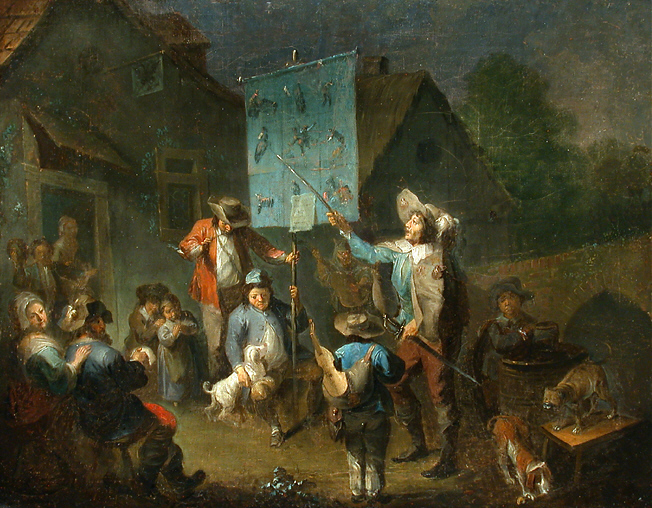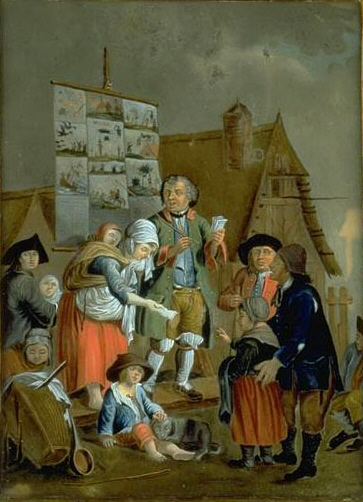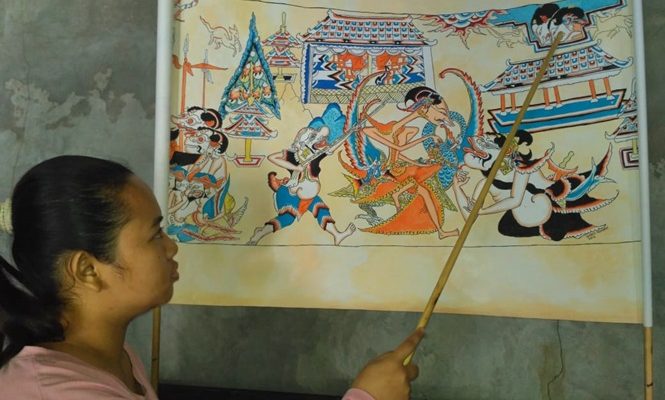Cantastoria - precursors of film and movie
Cantastoria is a traditional form of storytelling that originated in Italy during the Middle Ages. It involves the use of pictures and songs to tell a story, and it is considered one of the precursors of film and movie.
The word "cantastoria" is a combination of the Italian words "cantare" (to sing) and "storia" (story). The performer, known as a "cantastori", would use a series of illustrations or paintings, mounted on a wooden board, to tell a story as they sang or recited the accompanying narrative. The illustrations would be revealed one at a time, as the story progressed.
Cantastoria was a popular form of entertainment in Italy during the Middle Ages, and it was often used to tell religious stories or to educate the public about important events. The performances were often held in public squares, and they were often accompanied by music and other forms of entertainment.
Over time, cantastoria evolved to include more elaborate performances, with multiple performers and a wider range of stories. Eventually, the wooden boards were replaced with a type of portable stage, known as a "pupi", which allowed for more complex performances.
Cantastoria also had a significant influence on the development of modern film and movie. The use of illustrations and storytelling in cantastoria is similar to the use of moving pictures in film and movie. Additionally, the use of sound and music in cantastoria is similar to the use of sound and music in film and movie.
In modern times, cantastoria has largely fallen out of use, but it still has a strong presence in some parts of Italy, particularly in Sicily. There, it is still performed in its traditional form, with performers using wooden boards and reciting stories while accompanied by music.
Cantastoria Azia.
Cantastoria, a form of storytelling that uses pictures and songs, has a long history in Asia. In 6th-century India, traveling storytellers called saubhikas and yamapapaka performed religious tales and stories of the afterlife. In recent times, this tradition is still practiced by Chitrakar women from West Bengal, India.
In Indonesia, the wayang beber, a form of cantastoria art thought to be extinct, was rediscovered in the 1960s. It features four performers: a man who sings the story, two men who operate the rolling of the scroll, and a woman who holds a lamp to illuminate pictures in the story. In Japan, cantastoria is known as etoki or emaki and takes the form of hanging scrolls, foreshadowing modern manga.
Cantastoria Europe.
In Europe, cantastoria has also been popular for centuries. In 16th-century Italy, prayers were sung in the presence of illuminated scrolls while secular society produced the cantambanco. In Spain, blind men would recite or sing stories while a helper pointed to illustrations. In Germany, Moritat or Bänkelsang, a type of sensationalist bench song, was performed for four centuries until it was banned by the Nazis in the 1940s. In Czechoslovakia, it was called kramářská píseň and in Hungary, képmutogatás.
Cantastoria elsewhere.
In other parts of the world, such as Australia, cantastoria is also practiced by indigenous people who paint story sequences on tree bark and themselves for the purpose of performing tales. In the 19th century, giant scrolling moving panorama shows were performed in the United Kingdom and United States. In the 20th century, the art form was employed by radical art, theater and puppetry movements to tell stories from perspectives outside of the mainstream media.
In conclusion, cantastoria is a traditional form of storytelling that has played a significant role in the development of modern film and movie. Its use of illustrations, storytelling, and sound and music has influenced the way we tell stories today and it still has a strong presence in some parts of Italy.









Comments
Post a Comment